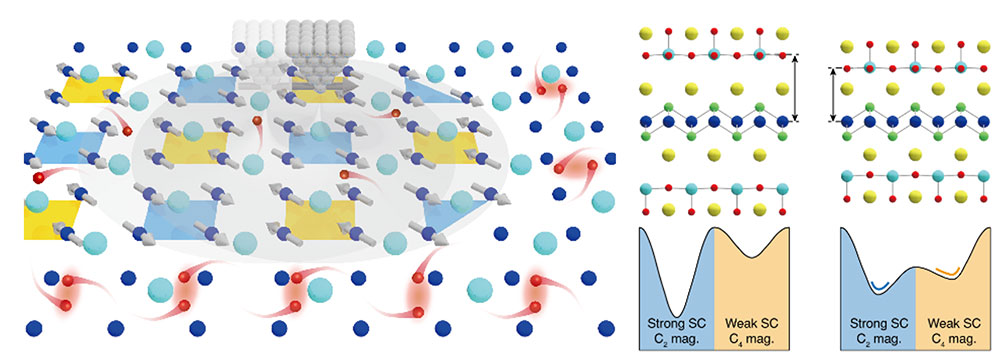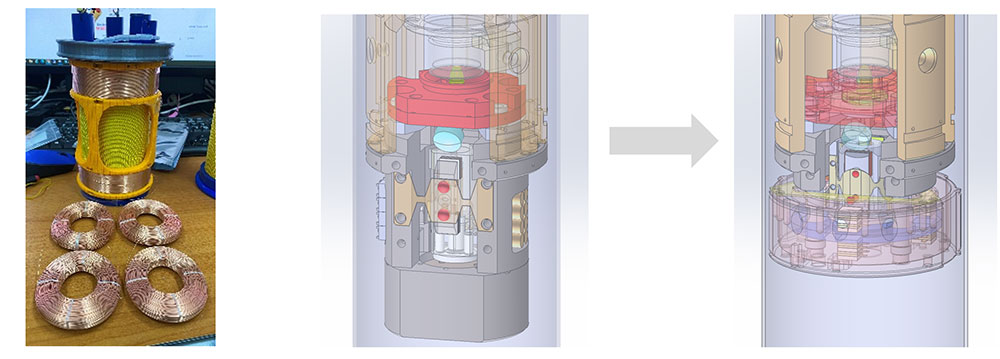Research Program
Cryogenic scanning probe microscopy and spectroscopy

Magnetism in conventional BCS superconductors is known to be detrimental to achieving high superconducting Tc. In modern superconductors, fluctuating magnetism can sometimes enhance superconductivity while formation of static magnetic order still suppresses superconductivity. We explore novel superconductors with marginal magnetic instability so that superconductivity can be switched by induction of magnetic order using atomic scale magnetic field or spin-polarized current injection (Phys Rev Lett). We explore the possibility of atomic scale superconducting circuit device which controls the transmission of the phases of superconducting order parameter for quantum information processing.

We also visualize and explore the formation of multifractal electron disorder near the Fermi level due to Anderson localization in quasi 2D materials with CDW (Nano Letters) and/or superconductivity (In preparation) and its suppression with magnetic field.
We also explore the possibility of antiwire-bound states that are localized to and propagate through the 1D atomic vacancy lines. (Submitted and under revision)
We also explore controlling antiferromagnetic domain walls by breaking the nanoscale balance using spin-polarized current injection. (In preparation)
We will revisit and improve on the above topics and the doping dependent cuprate physics near the Mott regime with dynamic 3d spin-polarized STM.

For decades, spin-polarized STM has revealed the secrets of magnetism in atomic scale but exhibited limited quantitative resolving power. We are developing a novel technique using dynamically controlled 3D vector magnet to resolve the vector components of the surface spin polarization in various magnetic and superconducting materials in the most decisive way possible.
We also explore new STM head designs with large-area capacitive-sensor-guided 3D tip walking system so that multiple (4-10) samples can be mounted in a single sample holder with uncompromised sample temperature control, as well as optical access to the tip-sample junction. The design will be implemented in variable temperature STM and then transferred to the mK STM for commercial grade user experience and spectroscopic capability.
We are working on a project to build cryogenic dual-probe AFM that may shed light on the accurate atomic-scale 3D geometry and properties of spike proteins on novel coronaviruses.
We are also adopting IoT and AI to control many parts of cryogenic STM experiment with minimal human intervention.
 Center for Artificial Low
Center for Artificial Low